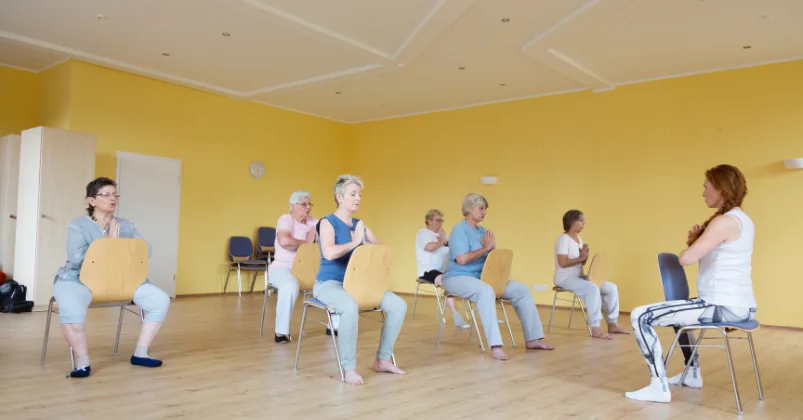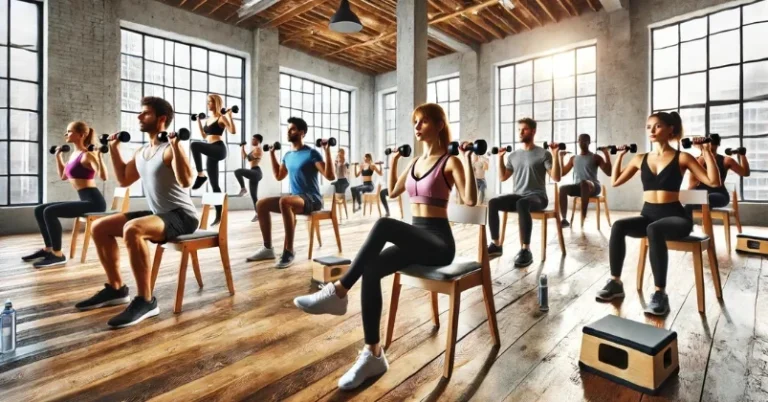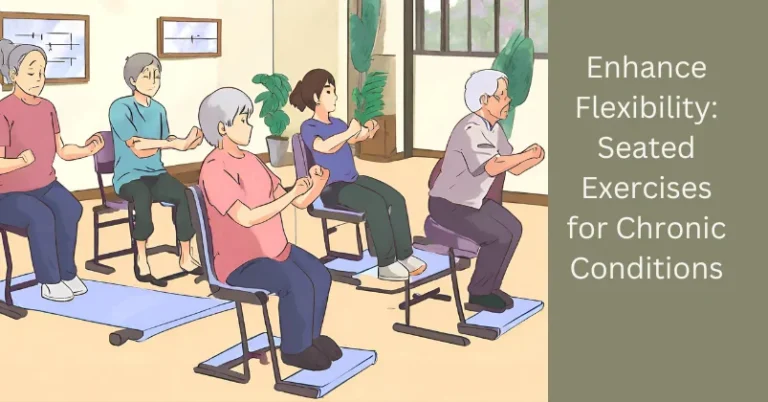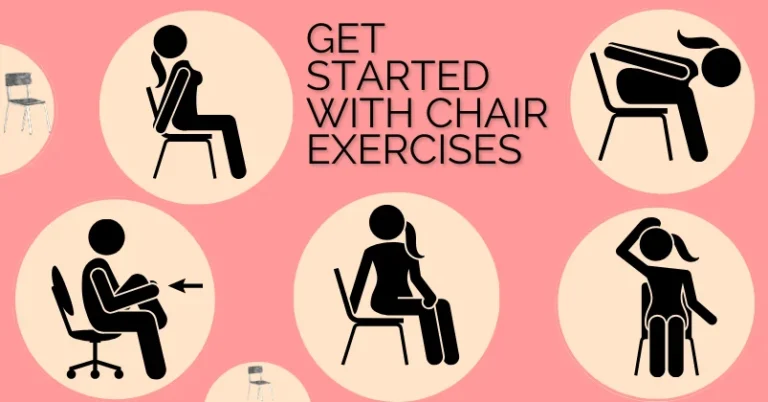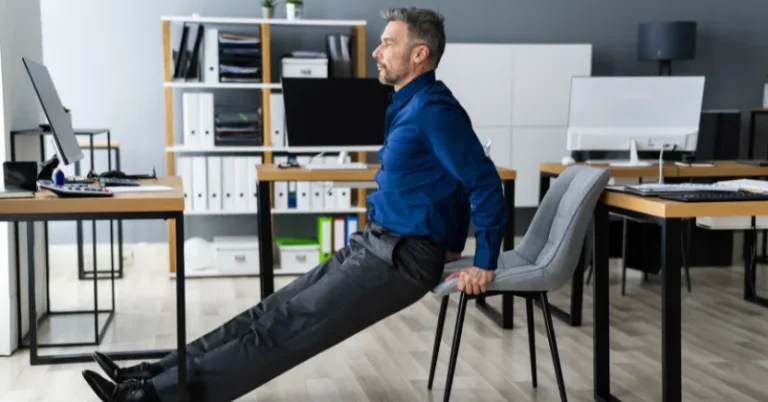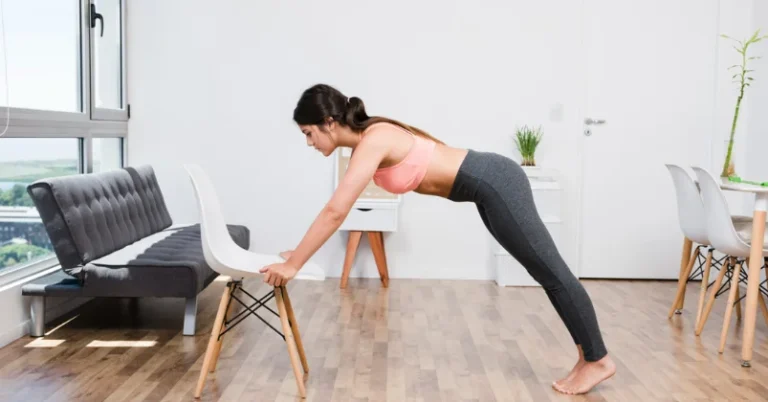Seated Chair Exercises: Rediscover Your Strength at Any Age!
Hey fabulous ladies—and gents too, of course! Whether you're a baby boomer or a millennial, if you're looking for a way to get fit without breaking a sweat (or maybe just a tiny one), you're in the right place.
Today we're talking seated chair exercises, the ultimate routine that's both gentle on your joints and effective in building muscle. Perfect for anyone dealing with mobility concerns or chronic conditions!
Who Should Consider Seated Exercises?
Are you over 30 and feeling like the Tin Man from “The Wizard of Oz”? Or maybe you're handling conditions like arthritis, diabetes, or hypertension?
Seated exercises can be your Yellow Brick Road to a healthier you. These are also fantastic options for our fabulous seniors who want to keep their groove on while staying seated.
Benefits of Seated Exercises
- Strength Building: Target those arm and leg muscles.
- Improved Circulation: Say goodbye to swollen ankles!
- Enhanced Flexibility: Reach for those toes—or at least the remote—easier.
- Psychological Well-being: Exercise endorphins, anyone?
Precautions Before Starting
Now, I'm no doctor, but please consult your healthcare provider before starting any new exercise routine, especially if you have a chronic condition. Also, make sure your chair is stable—no wheels—and provides good back support.
The Exercises
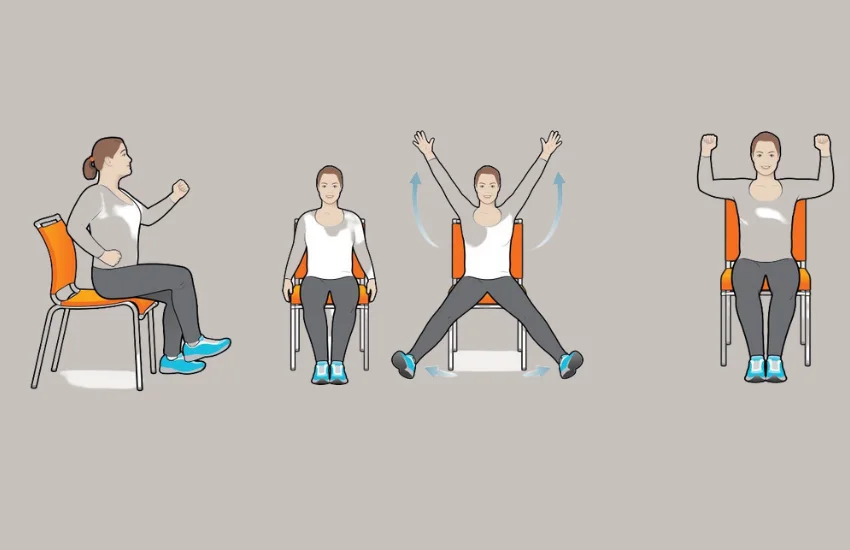
1. Seated March
- Sit up straight and march those legs up and down.
- Modification: Add some hand weights for extra oomph.
2. Chair Squats
- Stand up from the chair and sit back down.
- Modification: Don't sit all the way; hover above the chair for more intensity.
3. Seated Leg Extensions
- Sit up straight, extend one leg out in front of you, and hold for a few seconds before lowering it back down.
- Modification: Add ankle weights for extra resistance.
4. Seated Bicep Curls
- Hold weights or a couple of water bottles in your hands, arms fully extended, and palms facing forward. Curl your arms toward your shoulders, then slowly lower them back down.
- Modification: Use heavier weights as you become more comfortable with the exercise.
Equipment You Might Need (And Some Clever Alternatives!)
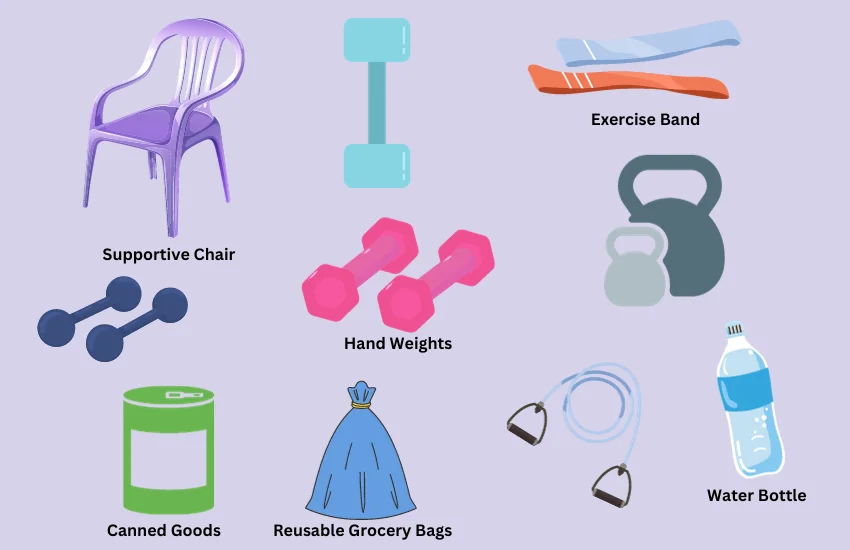
While one of the best things about seated exercises is their simplicity, a couple of basic items can make your workout even more effective. Don't worry, you don't need to invest in a full-blown home gym to get started!
1. Supportive Chair
First and foremost, you'll need a sturdy chair. Look for one without wheels to ensure stability, and ideally, it should have a straight back to encourage good posture.
2. Hand Weights
Hand weights can add that extra bit of resistance that turns a good workout into a great one. If you're just starting, try using lighter weights—say, 1 to 3 pounds—and then work your way up.
Alternatives to Hand Weights:
- Water Bottles: A pair of filled water bottles can serve as excellent makeshift weights.
- Canned Goods: Soup cans or vegetable cans offer a convenient alternative.
- Socks filled with Rice: This one's a DIY—you can fill socks with rice and tie them off to create your own hand weights.
- Reusable Grocery Bags: Fill them with items to achieve your desired weight, then hold the handles as you would dumbbells.
3. Exercise Band (Optional)
An exercise band can provide resistance for some exercises, helping you tone and strengthen different muscle groups.
Alternatives to Exercise Bands:
- Old Tights or Leggings: They can stretch and offer some resistance.
- A Towel: When pulled taut, a towel can serve a similar purpose as an exercise band.
Success Stories
You might be wondering if these exercises can actually make a difference in your life. Well, the best way to inspire you is through the real stories of people who have benefited from these seated exercises.
Their journeys are as diverse as they are, showing that no matter your age, fitness level, or lifestyle, a stronger, happier you is within reach.
Linda's Journey to Flexibility
Linda, a 65-year-old retiree, used to wince every time she bent down to tie her shoes. Between her arthritis and a previous back injury, simple tasks felt daunting. Then, she discovered seated exercises and started doing them consistently three times a week. Fast forward six months, and she's now not only tying her shoes with ease but also playing on the floor with her grandchildren!
Mary Finds Her Balance
Mary, in her late 50s, was always the active type, going for long walks and even participating in marathons. However, after a knee surgery, she found it difficult to stand for long periods. Feeling disheartened, Mary decided to try out our seated exercises and guess what? She's back to her walks and is even planning a 5K for the near future. She credits the seated exercises with helping her maintain her leg strength during her recovery.
Susan's Social Transformation
Susan, who just turned 40, had been struggling with her weight and hypertension. Due to her busy schedule, she felt like she didn't have time to go to a gym. Seated exercises became her go-to solution. She'd do them during her lunch break or even while watching TV. Not only has she seen an improvement in her blood pressure, but she's also more outgoing and confident in social settings.
Dave Breaks the Mold
Who said seated exercises are just for women? Meet Dave, a 35-year-old dad who used to be a gym junkie before life got busy with kids and a demanding job. With limited time to keep fit, Dave decided to incorporate seated exercises into his routine. Now, he says he's in better shape than he was in his 20s, and what's even better, he can exercise while helping his kids with homework.
Take the Chair: Your Pathway to Health and Happiness
Ladies, gents, and everyone in between—life doesn't stop at 30, 40, 50, or beyond. Your quest for strength and vitality can start today with something as simple as seated chair exercises. From Seated Marches that get your blood flowing to Bicep Curls that add some zing to your arms, this workout is for everyone—no matter your age, fitness level, or mobility concerns.
Remember, as with any exercise routine, please consult your healthcare provider, especially if you're dealing with chronic conditions or mobility issues. Here's to a healthier, happier you—one chair exercise at a time!
FAQ: Your Burning Questions Answered!
A: Absolutely! Seated exercises can be highly effective for building strength, improving flexibility, and boosting circulation. The key is to maintain good form and steadily increase the intensity of your workout as you go.
A: While seated exercises are generally gentler on the back compared to standing routines, it's crucial to consult your healthcare provider for personalized advice. Always listen to your body; if an exercise is causing discomfort, stop immediately.
A: Consistency is key! Aim for at least 3 times a week to start. As you get more comfortable, you can increase the frequency and intensity.
A: Not necessarily. The beauty of seated exercises is their simplicity. All you need is a sturdy, non-wheeled chair. Optional hand weights can add intensity, but they're not mandatory.
A: Absolutely! As long as you have a sturdy chair and some space, you can easily integrate these exercises into your workday. Just be mindful of your attire and your environment. Perhaps save the more intense moves for home!
A: Not at all! While these exercises can be particularly beneficial for those with mobility issues or chronic conditions, they're also a great option for anyone looking to add variety to their workout routine.

